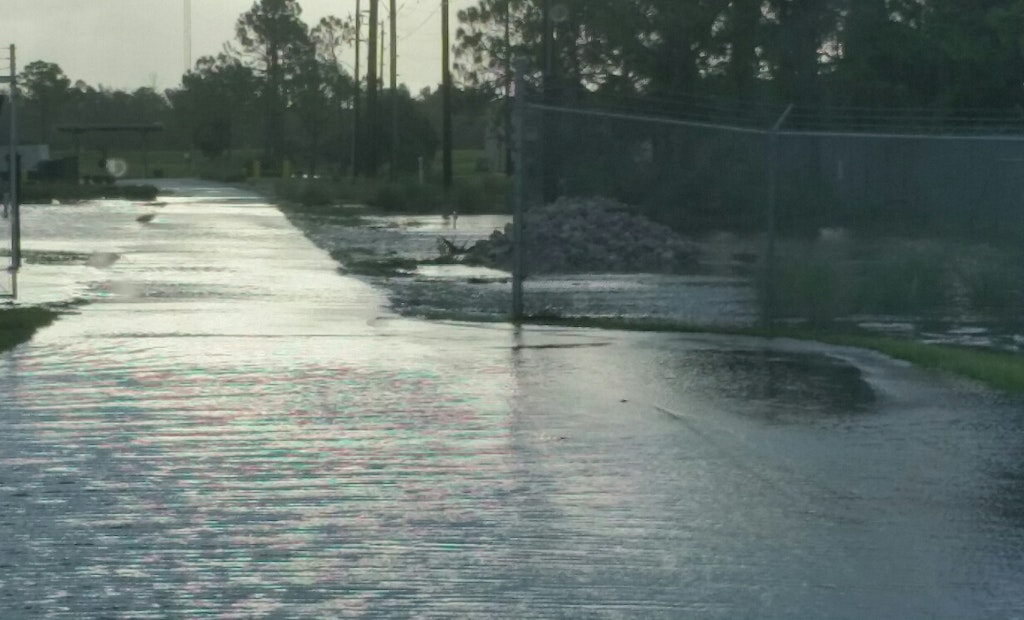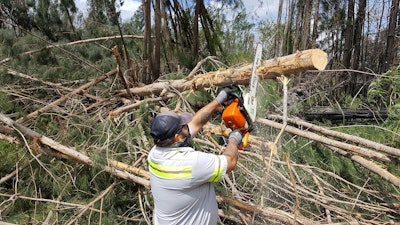
Interested in Infrastructure?
Get Infrastructure articles, news and videos right in your inbox! Sign up now.
Infrastructure + Get AlertsAs Hurricane Irma made its way through the Caribbean last week, setting storm records on its way to the United States, water and wastewater utilities braced for the worst. The storm seemed to be traveling toward Florida’s Atlantic Coast, but then the eye of the storm shifted westward as it got closer to making landfall.
While Irma’s effects were felt throughout the state, they varied, and many utilities were able to make it through the storm in fairly good shape.
Although storm conditions weren’t as bad as expected in Charlotte County, on the Gulf Coast in the southwest portion of the state, Hurricane Irma still taught the county’s utilities department some lessons as well as reinforced the importance of the planning the water and wastewater team had done.
Gale force winds of 105 mph were recorded in the area, and local rainfall amounts totaled between 10 and 11 inches, according to weather reports. The utility experienced power outages and minor flooding, but only one precautionary boil-water order had to be issued in the western part of the county, treatment plants survived in good shape despite downed trees and some exterior damage, and the utility did not lose pressure anywhere in the water system, according to Dave Watson, utility services manager.
“All in all, we fared pretty well during the storm,” says Kaley Miller, the utility’s public relations manager. “There was a lot less impact than we anticipated.”
While there were 114,100 power outages in Charlotte County, the water and wastewater facilities were able to keep operating thanks to backup emergency generators the county had in stock.
One lesson learned involved the maze of more than 300 lift stations the utility maintains along its 911-mile collections system. Eighty-one of those stations lost power, according to Watson, and the flow in the system was interrupted as some lift stations were powered on and some were down.
“You need to always be aware of how your lift stations interact,” says Miller. “We have one new pilot lift station that uses vacuum technology, and it was fine. But other older lift stations went down and it took a while to get emergency generators to them.”
As a result, she says, the utility had to pay special attention to the flow rates throughout the system until all stations were back on line.
“We had one force main break, which could have resulted from the changing pressures,” she says.
Advance preparation paid off. The water and wastewater utility was a main participant along with police, fire and county communities in the emergency operations center set up in Punta Gorda, the county seat.
The utility had extra fuel on-hand to deal with fuel shortages, and monitored fuel usage closely during the storm.
And recent wet weather gave the utility a leg up on overflows.
“While we had a lot of manhole bubbles,” Miller says, “we had contracts already in place with pumping trucks because we’ve had a lot of rain and I&I lately, plus we had a few of our own pumping trucks ready to go.”
Watson says the utility was able to deal with the emergency with existing staff, working two 12-hour shifts. Only six employees of his 33-member team had evacuated and they were able to return within 48 hours of the storm.
Preparation and experience with previous storms also helped the wastewater team in the Atlantic Coast community of Palm Coast, Florida, weather Hurricane Irma.
“We had 75 to 90 mph winds and over 10 inches of rain in two days, but the storm was starting to fizzle out when it got here,” says Patrick Henderson, utility chief operator.
Still, about 80 percent of the local power utility’s customers lost power, and that included all 156 of the Palm Coast system’s lift stations.
“By using our portable emergency generators, we were able to get our pumping stations back on, one by one,” says Henderson. “It’s important to get your generators out into the field as quickly as possible.”
Overflows were another issue, and Henderson credits good relationships between the utility and various local septic pumping companies with keeping the situation under control.
“They helped us control overflows both at manholes and at the pumping stations,” he says.
The utility’s treatment plant itself is built on higher ground and did not flood, but Henderson says the heavy rains and flooding elsewhere produced flows ranging from to 10 to 12 mgd. The plant is rated at 6.83 mgd.
The Palm Coast utility has had an emergency plan in place since the 1990s, and has activated it for several hurricanes and storms.
“We have a good action plan,” says Henderson, “and everyone knows what to do. It’s better to be prepared than sorry.”
The Palm Coast plant is staffed by nine employees, and four were kept behind at the plant as the storm loomed. When the others could travel, they provided relief in 12-hour shifts.
“By the weekend,” Henderson says, “we hope to have everything back to normal.”
Farther south on the Atlantic Coast, the water infrastructure in Miami-Dade County has held up very well in the face of Hurricane Irma despite torrential rains and widespread flooding.
According to Jennifer Messemer-Skold, media and public relations officer for the Miami-Dade Water and Sewer Department, all of the utility’s water and wastewater treatment plants are operational as of Sept. 13, and the department has not had to issue a precautionary boil water order.
Miami-Dade operates three wastewater treatment plants, processing a total of over 300 mgd. The collections system is 6,300 miles long, and is powered by over 1,000 pumping stations. On the water side, the department has three regional treatment plants and five smaller ones. The distribution system consists of about 8,000 miles of mains and laterals.
“We have extensive disaster plans in place in order to mitigate damage and service interruptions,” says Messemer-Skold.
She says the department has requested that the public conserve water to place less demand on the potable water system, and to decrease wastewater production in order to mitigate impact on the system.
Messemer-Skold says crews were deployed to the field as soon as weather conditions permitted in order to assess infrastructure and to begin making repairs to pipe breaks and pump stations.







